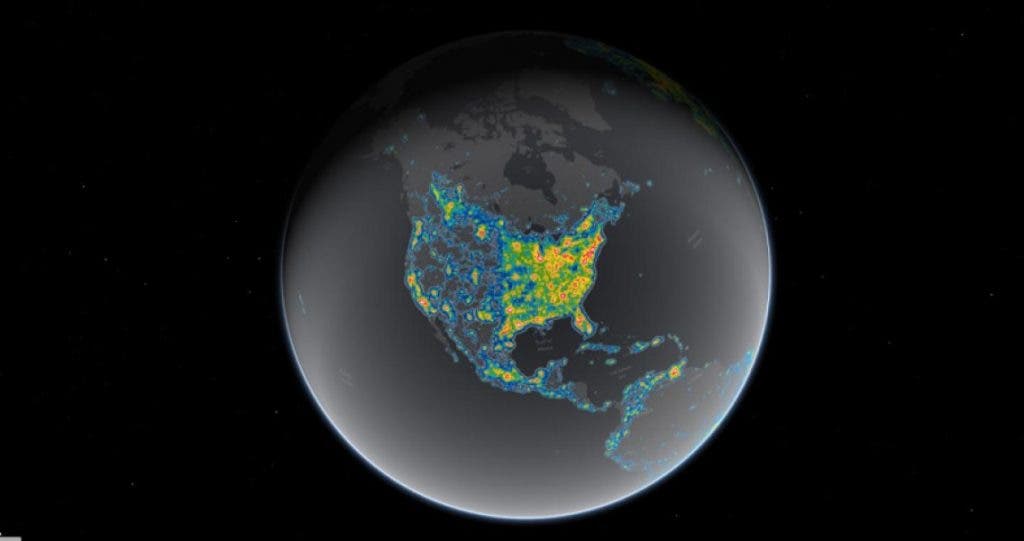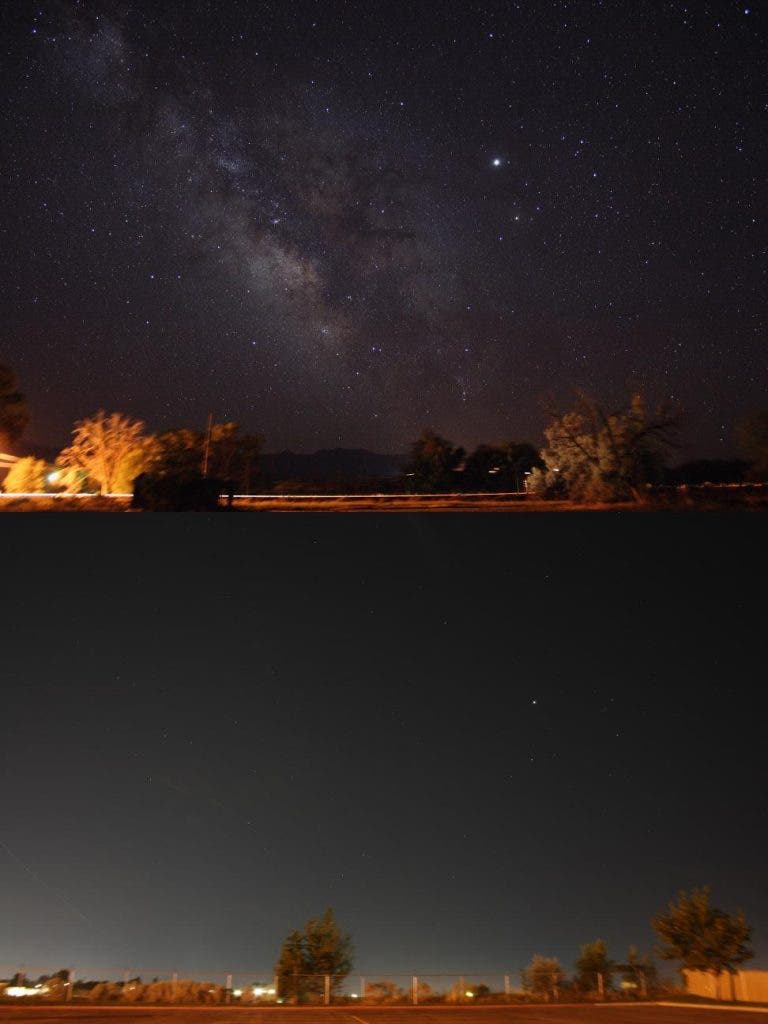The vibrant night’s sky that has enchanted countless generations is fading from memory. Eight in ten Americans and a third of the world live in areas where the luminous fog set by cities’ bright lights obscure the Milky Way, and even some of the brightest planets in our solar system.
Any eye-opening map

The bright areas of the map show where stars and constellations are blocked. Credit: Falchi et al, Science Advances; Jakob Grothe/National Park Service, Matthew Price/CIRES/CU-Boulder.
Chris Elvidge, a scientist with NOAA’s National Centers for Environmental Information in Boulder, Colorado, is a part of a team of researchers who charted the night’s sky against background light sources here on Earth. Using data like low-light imaging from the NOAA/NASA Suomi National Polar-orbiting Partnership satellite and thousands of ground observations, they were able to make a light pollution map which highlights which areas of the globe are now oblivious to the night’s sky.
“We’ve got whole generations of people in the United States who have never seen the Milky Way,” said Chris Elvidge, a scientist with NOAA’s National Centers for Environmental Information in Boulder, Colorado. “It’s a big part of our connection to the cosmos — and it’s been lost.”
The lights of a city drown out those coming from stars because they effectively make the atmosphere glow. Rays from bright city lights hit molecules in the air which reflect the light back down covering the city and its vicinities into a dome. Inside this dome, the noise is so significant that faint light sources like nebulae or distant galaxies can’t be seen anymore. Bright objects such as the Moon, the big planets, or some of the bright stars, are not affected by light pollution. You can see the different between a heavily light-polluted and low light-polluted night sky below.
The atlas suggests that countries like the United States, Singapore, North Korea or Western Europe have the most extensive light pollution. Canada and Australia retain the darkest sky, owing to the vast portions of their landmass being uninhabited. The United States also has wide patches of open spaces, but half of the country is still too bright to see the Milky Way.
“In the U.S., some of our national parks are just about the last refuge of darkness — places like Yellowstone and the desert southwest,” said co-author Dan Duriscoe of the National Park Service. “We’re lucky to have a lot of public land that provides a buffer from large cities.”
Besides missing a stellar spectacle, light pollution also affects wildlife. The unnatural light confuses insects, birds and even sea turtles and can get them killed. Light pollution is also perilous to human health because it alters our natural sleep-wake cycles or the circadian rhythm.
One obvious solution is for municipalities to use more environmentally friendly lighting. Unfortunately, the night’s sky will likely be fogged even more as cities switch to LED lights which can be ten times more energy efficient, but also give out an even white light which is the most effective at blocking the Milky Way. These LED lights can be shielded to restrict their light emissions to their immediate surrounding area, though. It costs a bit more, so notify your representatives and town officials that this is something that’s important to the community.
Findings appeared in the journal Science Advances.










